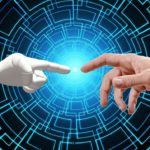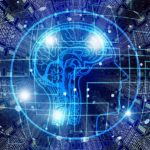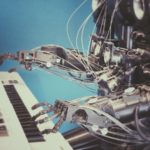
Defining Data Science
Data science is often billed as the future of Artificial Intelligence (AI), which means it has become more important than ever to understand the concepts and purpose behind it. But first, we need to define it. According to “What Is Data Science?” on Edureka, data science is a blend of various tools, algorithms, and machine learning principles with the ultimate goal of discovering hidden patterns in the raw data.
It’s easy to argue that scientists have been using data for years, and while that’s true, the difference between data and data science comes down to explaining vs. predicting. A data scientist uses analysis to discover insights, along with machine learning algorithms to predict future occurrences of the data. This is far more in-depth than what a data analyst does, which is to process the history of the data.
Because of this distinction, data science is most often used for predictive casual and prescriptive analytics, as well as machine learning for making predictions and pattern discovery. With data analysis and machine learning, data scientists are able to determine if something that has already happened is likely to happen again in the future. For example, a data scientist can analyze payments made to a health insurance company to determine if future payments will continue to be made, whether or not those payments occur on time. Another example, using pattern discovery, a data scientist is able to find clusters of users for user segmentation, according to the users’ interests.
Phases of the Data Science Life Cycle
Data Science can be divided into a seven step life cycle.There are six main phases and, as with any process, the phases need to occur in a specific order in order to be successful. In phase one, discovery, the scientist needs to determine what information they’re looking for and gain an understanding of the projects requirements and priorities. During this phase, hypotheses are formed.
In phase two, data preparation, scientists create an analytical sandbox so they have somewhere to store the data they’re researching and will eventually distill into more formal information. During this phase, scientists can establish the variables they are looking for that will help them answer the hypotheses.
In phase three, model planning, scientists determine methods to connect variables to one another. These variables are implemented via algorithms in phase four, model building. This is the testing and training phase, when models are run to determine if the tools that have already been created are sufficient or if stronger environments need to be created.
In phase five, operationalize, a pilot project is often created in a real-time environment. This step helps determine if the project is strong enough to be deployed or if more work needs to be done. In the final phase, it’s time to communicate the results obtained from research done by the data scientists.
All of these phases work in tandem with one another to achieve well-researched data that helps scientists determine what the future will look like within specific businesses.
Required Data Scientist Skills
In order to be successful as a data scientist, there are eight skills that should be honed and maintained. It’s vital to have programming skills, especially knowing a programming language such as R or Python, along with a database query language like SQL. It’s also important to have an understanding of statistics, especially when it comes to figuring out which techniques are valid or invalid.
In order to best understand data, especially at companies such as Netflix, it’s important to have more than a basic understanding of machine learning methods, such as k-nearest neighbors and random forests. Data scientists should also have an understanding of multivariable calculus and linear algebra. Knowing about predictive performance can also be a big win for companies in this field.
Data wrangling and data visualization and communication are also very important. These three methods are very important for communicating the data produced from the research scientists have done. Data visualization tools, such as matplotlib, ggplot, and d3.js can all aid data scientists in organizing their research for presentation.
Why Should Developers Learn Data Science?
There is scarcity in the data science field so jobs are plentiful in most places, particularly if candidates possess the above skills. By learning these skills and using the many resources available to data scientists it becomes much easier to break into the field and find steady work.
When it comes to data science, things are growing by leaps and bounds. By acquiring the necessary skills, people can go on to have very successful careers in the field. There is also a lot of room for growth in the field as scientists learn more and get more skills under their belts.


